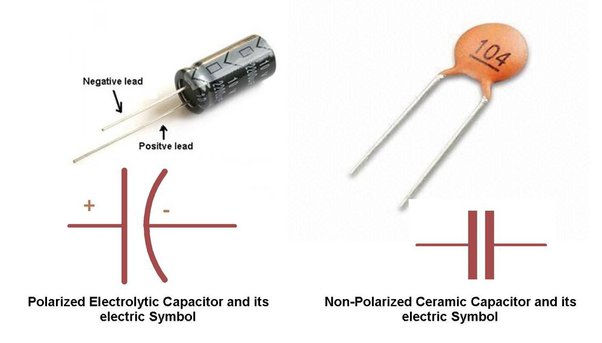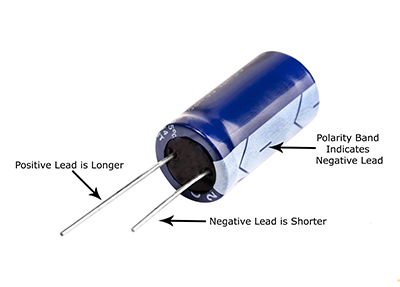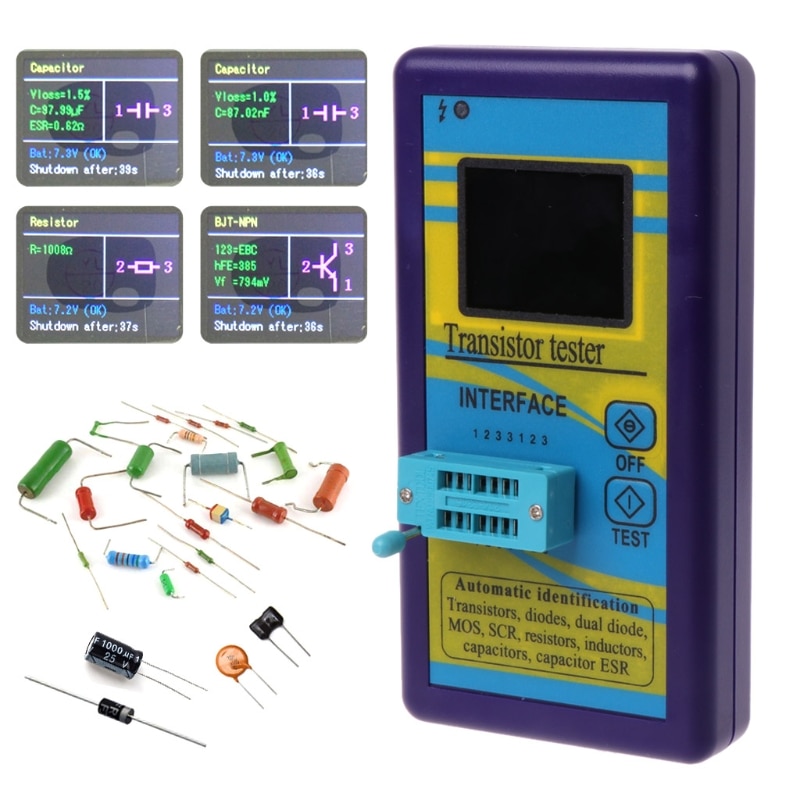Capacitor anode cathode identification is very important when you are working with electrolytic capacitors. Wrong pin connections can lead to bad results and sometimes can damage your capacitor.
There are two easy methods through which we can tell which leg of the capacitor is a positive anode or negative cathode.
The first method is a visual inspection in which we tell directly that the long leg of a capacitor is the positive terminal and the other (shorter one) is positive.
The second method uses an M328 component tester to verify the right pin of any capacitor, and also to tell whether the capacitor is a good or bad one.
Hi, I am Abbas. If the above short introduction has got you excited then I am sure you will find the rest of the article helpful too.
I am not perfect, nor this article is going to be. This is just my little try to help you somehow.
I hope you will enjoy it.
Capacitor anode cathode identification
You know a capacitor is a two terminals passive component. By passive, I mean it requires external power for its proper operation.
We use capacitors in our circuits for a variety of reasons. We use them as the charge storing devices, as filters to filter out unwanted frequencies from the signals, and much more.
There are two types of capacitors we deal with in almost every electrical or electronic circuit. They are the following:
Ceramic capacitors: They don’t have any polarity. For example, these types don’t have anode and cathode. You are free to connect them in any direction. It will not affect its operation.
Electrolytic capacitors: They are polarity dependent capacitors. This means you have to first identify its positive anode and negative cathode. If care is not taken care of with polarity, you may end up damaging the capacitor.

So, I think now we are clear that when we say capacitor anode cathode identification we actually mean the electrolytic capacitor.
Let’s look at the two easy methods that will help us achieve the said task.
Method 1: Visual inspection
You will follow this method most of the time when working with electronics circuits.
This method is easy and doesn’t require any tool except your own eyes.
Follow the following steps:
- Take the capacitor you want to test
- Notice the long leg.

- This long leg is your positive anode
- The other one is the negative cathode- it is that simple.
Now the problem with the method is – you can’t apply it to already used capacitors.
This method is good for new capacitors. But when capacitors are used in the circuit their legs are cut, and you can’t say which terminal is longer than the other.
In this said situation follow the following steps for capacitor anode cathode identification.
- Take the capacitor
- Look for the vertical strip, called the polarity band on the capacitor body

- The terminal attached to this polarity band is the negative cathode.
- While the other terminal is the positive anode.
In a short summary, the short terminal of a new capacitor is a cathode. If there is no short terminal (or the terminals are of the same length) then the side where there is a polarity bar is the negative terminal cathode.
Method 2: Using the M328 Component tester
The second method requires a tool called the M328 tester. This method is totally optional. I am sharing it with you to just let you that there exists another exciting method as well.
M328 is an electronic device that helps us:
- Identify various electronics components
- Give us the circuit symbols of under-test components
- Check for the right pin configuration including any type of capacitors.
- Also, give us all the related parameters of the under-test component.

To use the M328 Component tester (Amazon link) for the identification of capacitor anode and cathode, follow the following easy steps.
- Take your capacitor
- Turn on the M328 tester.
- Put your capacitor in the tester and press the test button.
- Get the required results on the screen in a matter of no time. – that simple.
On the screen, you will see the circuit symbol of your capacitor with its right pin configuration.
Also, this method is applicable to both old and new capacitors. It doesn’t matter for this method what is the length of any leg of your given capacitor. Just simply put the capacitor in the tester, press test, and get the results.
Conclusion
Capacitors are the most used component in electrical and electronics circuits.
It has two types, ceramic which is nonpolar, and the electrolytic capacitor which is polar, i.e. polarity dependent.
For the electrolytic capacitor, polarity is important, i.e. you have to identify its anode and cathode before placing it in any circuit.
In this article, we just try to talk about electrolytic capacitor anode cathode identification. We look at two simple easy methods.
That is it. That is all I have to share about the said topic.
I hope you enjoyed it.
Thank you and have a grateful life.
Other useful posts:
- Diode Anode Cathode Identification (#2 Easy Methods)
- #10 Capacitor functions in circuits (Some best uses)
- 3 Easy ways to identify transistor legs/pins
- Potentiometer pins configuration

👏👏👏♥️♥️♥️